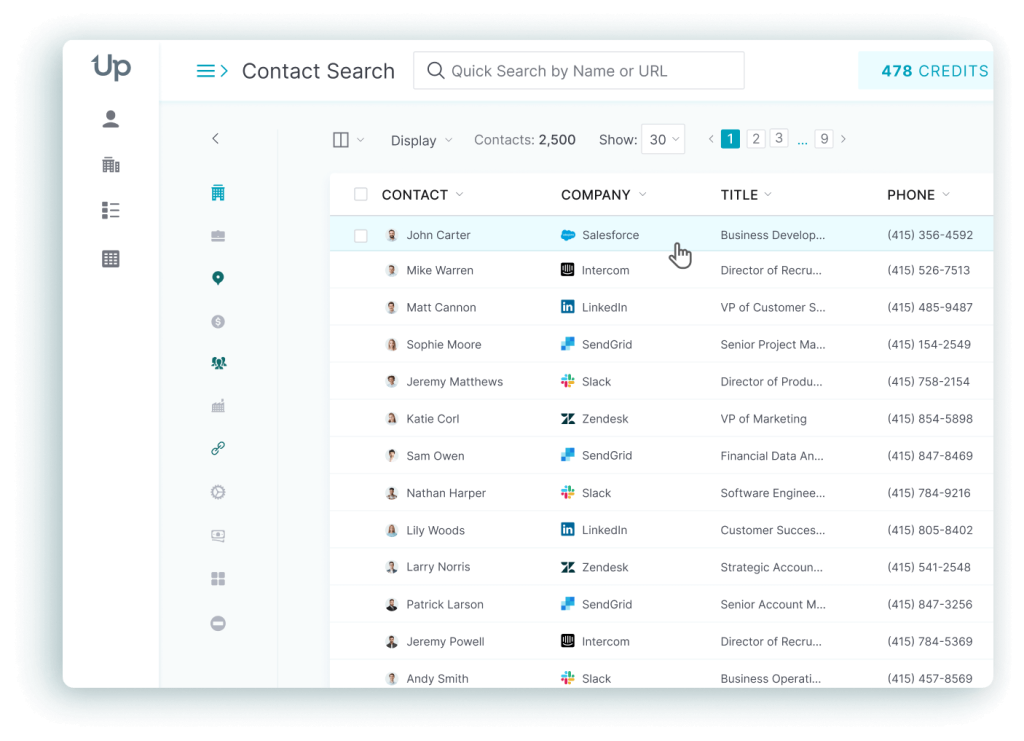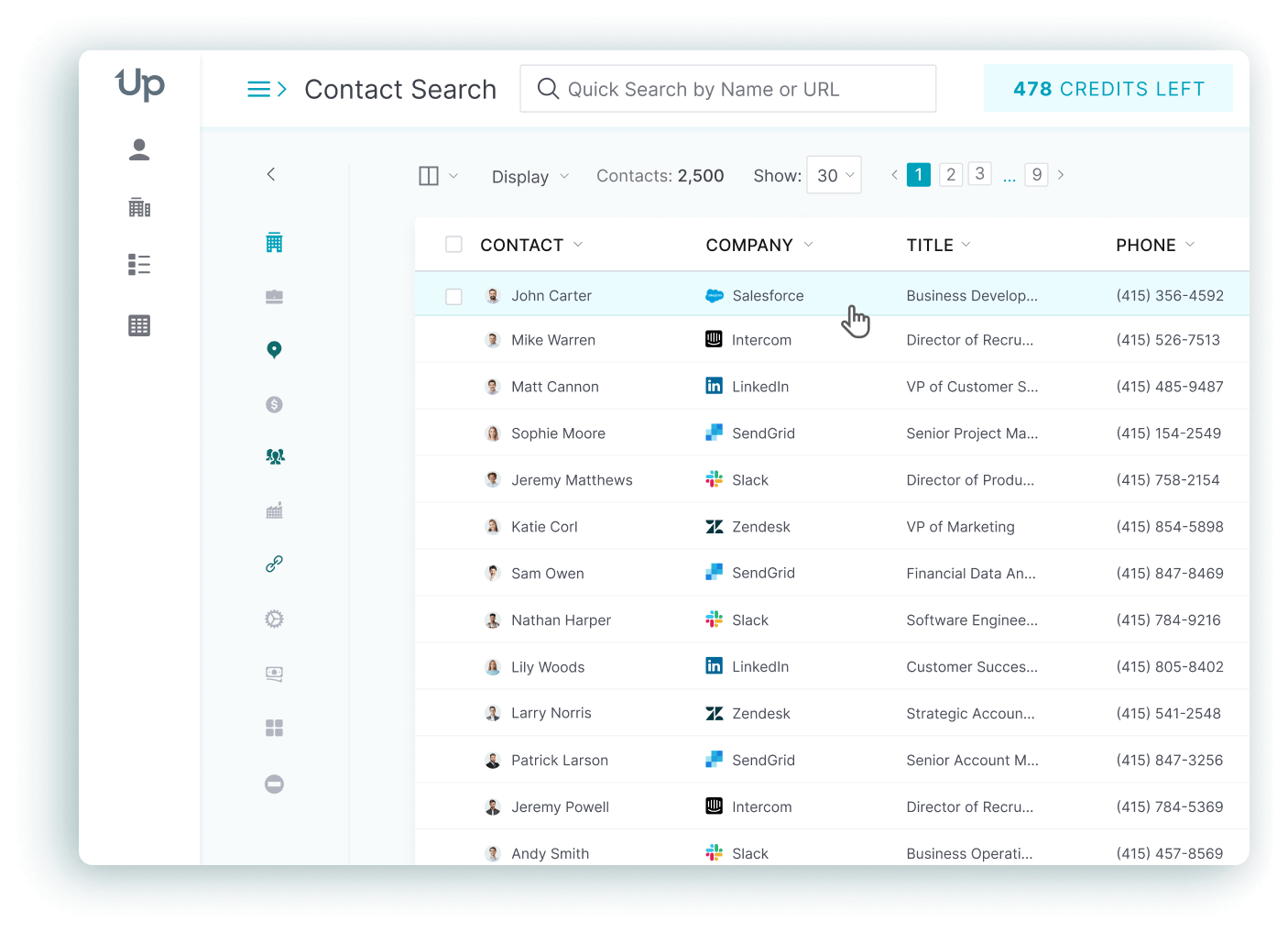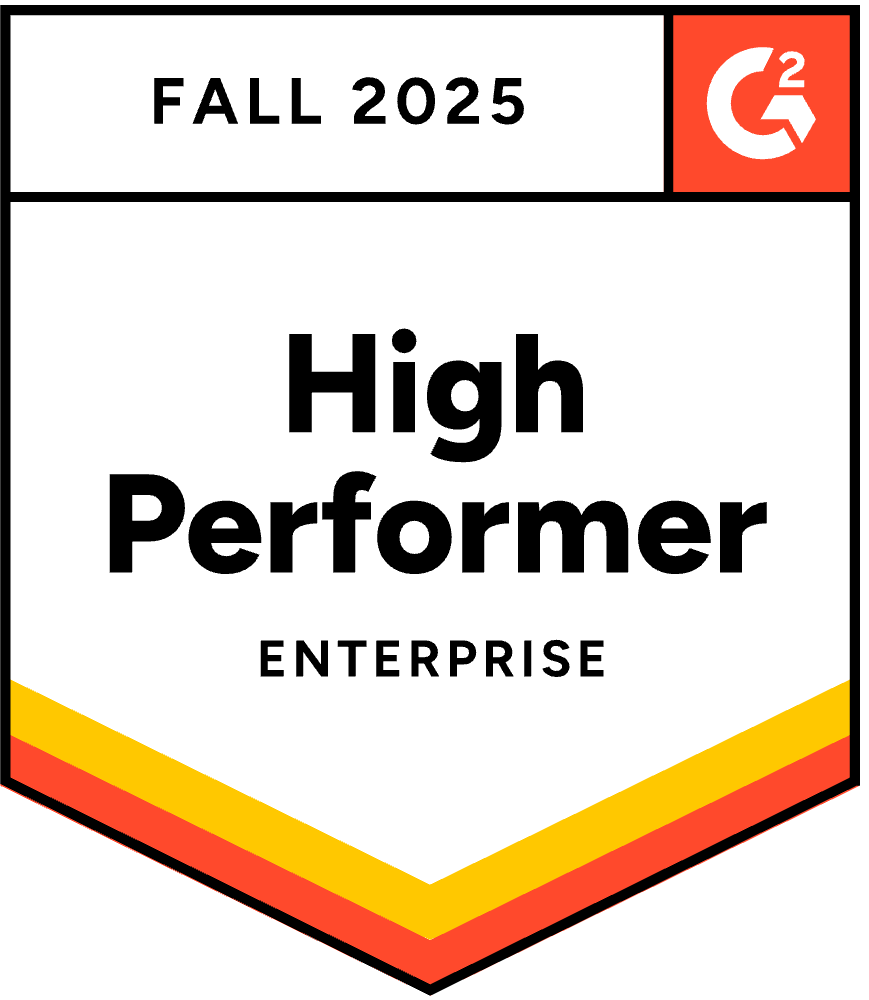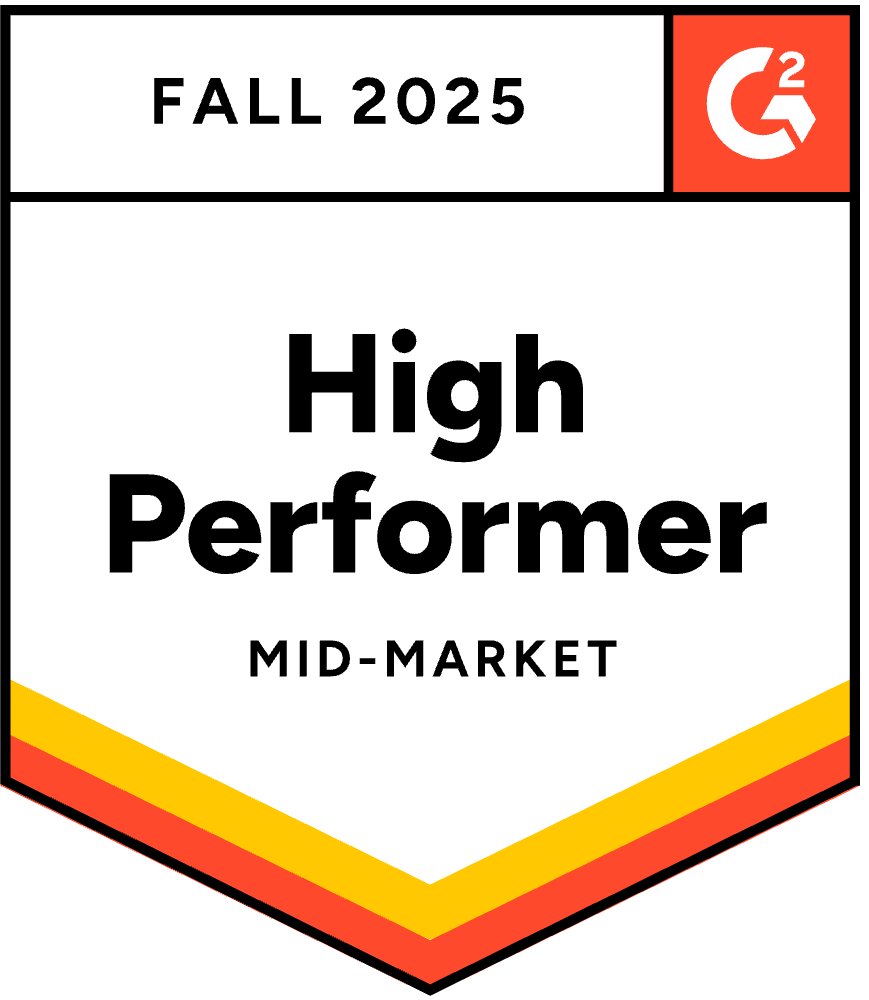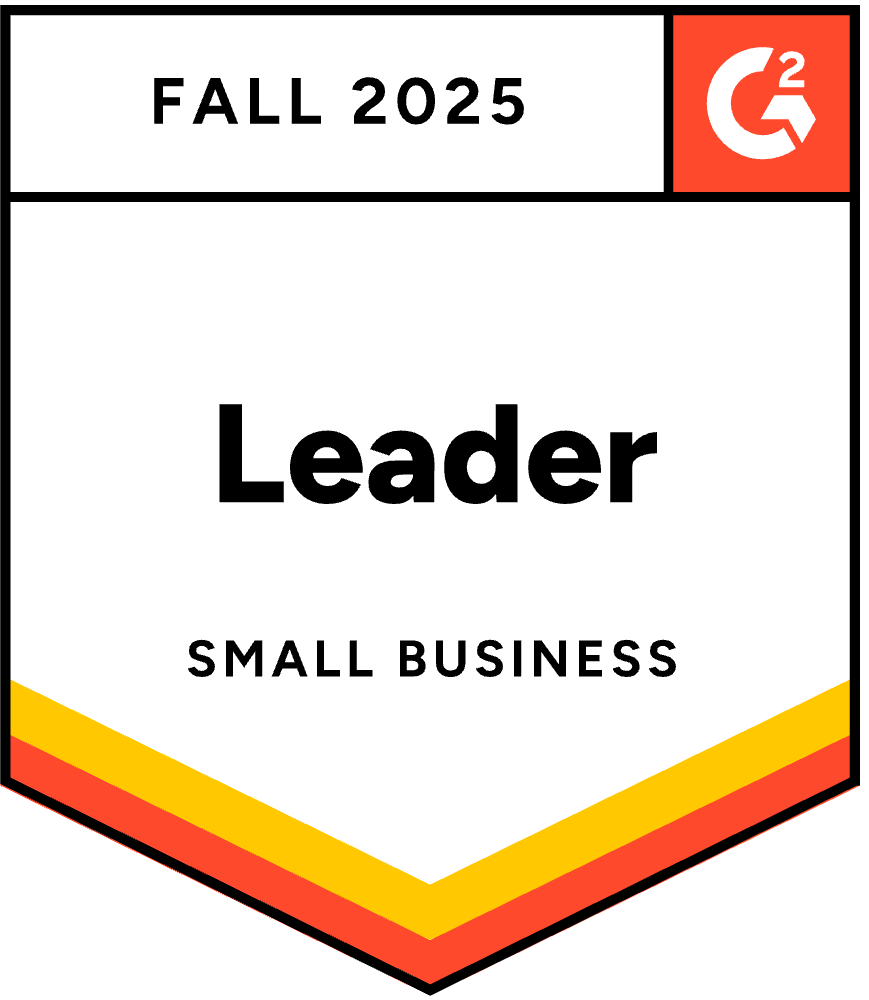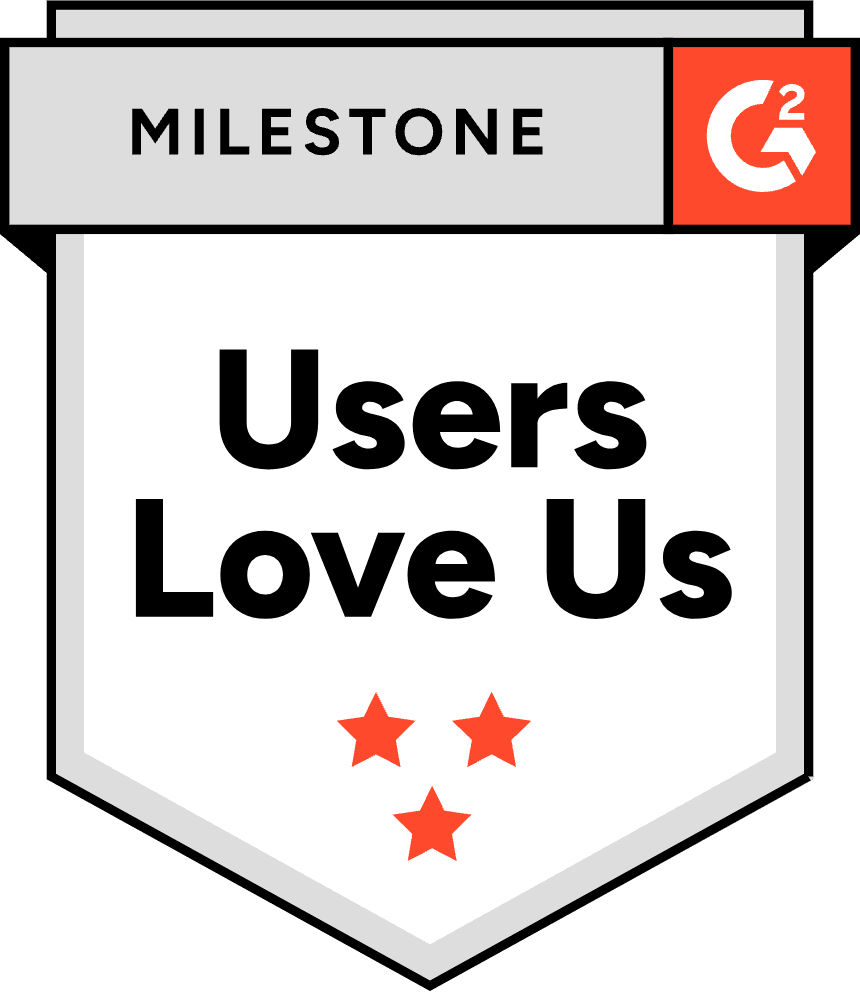According to the Q2 2025 Solar Market Insight report from SEIA and Wood Mackenzie, solar accounted for a dominant 69% of all new electricity-generating capacity added to the U.S. grid in the first quarter of 2025, making a strong lead generation strategy essential to compete. The US solar market is booming, but so is the competition. You face a flood of new installers, driving your customer acquisition costs through the roof while your pipeline runs dry.
You burn cash on lead generation campaigns that deliver nothing but duds. Your sales team wastes hours chasing ‘exclusive’ leads that five other companies are already calling, only to get ghosted or dragged into a race to the bottom on price. It feels like you just pay for the privilege of being first to get a ‘no’.
Stop buying dead-end lists and start building a predictable growth machine. This 2025 playbook is your definitive guide to the top US-focused solar lead generation partners and strategies that deliver qualified solar leads and high-intent prospects, turning wasted ad spend into closed deals. In this guide, you’ll get an actionable plan to navigate lead types, calculate your maximum spend per lead, identify red flags, and nurture purchasing solar leads for maximum conversion.
What Are Solar Leads?
Solar leads are individuals or businesses interested in solar power, looking to discuss solar installations within the thriving solar industry.
Solar companies gather these prospects through various channels, including inbound and outbound marketing strategies like content that engages, ads on Google and YouTube, and even buying leads from trusted sources.
Generating or purchasing solar leads offers a pathway to expand into new markets, manage resources better, and forecast sales more accurately, ultimately making it a cost-effective strategy to grow the solar business.
What Types of Solar Leads Can I Purchase?
You can purchase different types of solar leads, such as exclusive solar or shared leads, or real-time or aged solar leads. Here’s a comprehensive list of solar leads types based on different criteria:
Exclusive vs. Shared Leads: A Direct Comparison
Exclusive Solar Leads:
Pros:
- Reduced Competition: Sold to only one company, providing an exclusive opportunity
- Higher Conversion Rates: The lack of competition directly leads to a higher likelihood of closing a deal
- High Quality Solar: Leads are often better vetted, pre-qualified, and have higher intent
- Improved Sales Efficiency: Sales teams waste less time on dead-end leads and focus on closing
- Enhanced Customer Experience: Prospects are not bombarded with calls from multiple companies
Cons:
- Higher Solar Leads Cost: They are more expensive upfront, with prices ranging from $100-$300+ per lead or appointment
- No Guarantees: Despite higher potential, a sale is never guaranteed
- Dependence on Provider: Reliance on a third party for lead generation can limit control
Shared Leads:
Pros:
- Lower Cost: Significantly cheaper, often priced between $15 and $150
- Scalability: Allows solar companies to quickly increase lead volume
Cons:
- High Competition: Leads are sold to multiple companies (sometimes 4 or more), leading to price wars and reduced chances of winning
- Lower Conversion Rates: More competition directly results in fewer sales per lead
- Lower Quality: Leads are often less vetted and may have lower intent
- Negative Brand Impact: Customers can get annoyed by multiple calls, potentially harming your brand’s reputation
- More Effort Required: Requires a faster, more aggressive sales process to beat competitors
Real-Time vs. Aged Leads
- Real-time or Fresh Leads: Generated from direct marketing activities such as online ads, TV commercials, radio spots, and social media. These leads are captured when a potential customer expresses interest immediately after seeing the ad or promotional material. They are the most expensive because they are the most likely to convert and are fresh.
- Aged Solar Leads: From the same sources as real-time leads but not purchased immediately. Over time the leads that haven’t converted are sold at a lower price. These can be a few days old to over a year old and are a more affordable option for campaigns that don’t need to convert immediately.
Pre-Set Appointments vs. Live Transfers vs. Data Leads
- Solar Live Transfer Leads: Leads where a call center contacts a potential customer and once the customer shows interest, transfers the call to a sales rep. This means the lead is hot and interested and has a high chance of conversion.
- Solar Appointments: Pre-scheduled appointments where the prospect has agreed to discuss solar in detail. This lead type usually comes from higher engagement methods like live transfers or direct calls.
- Appointment-setting Calls: Leads generated from outbound calls where the goal is to set an appointment rather than sell directly. These are usually part of a telemarketing effort to filter and schedule interested customers for detailed consultations.
Lead Generation Method
- Canvassing Leads: Generated from door-to-door marketing. Teams visit potential customers in person to talk about solar energy, creating immediate engagement and high conversion in the right demographics.
- Opt-in Web Leads: These leads come from online forms filled out by potential customers who voluntarily give their contact information in exchange for more information about solar solutions. This method has a higher conversion rate because the leads have shown active interest.
- Organic Solar Leads: Generated from SEO where potential customers find the solar provider through organic search engine results. These leads are valuable because they are driven by the customer’s own research and interest.
- PPC Leads (Pay-Per-Click): Generated from paid advertising like Google Ads where potential customers click on ads and are directed to a landing page to fill out their information. This method can generate a high volume of leads quickly but at a higher cost.
Lead Qualification Level
- Qualified Solar Leads: These are leads that have been pre-verified to make sure the potential customer meets certain criteria such as credit score, homeownership and interest in solar. This category has higher conversion rates because the prospects have already shown significant interest or intent to buy solar installations.
- Non-Qualified Leads: Leads that haven’t been screened for specific qualifications. They are cheaper but require more work to convert because they might not meet all the sales criteria for solar installation eligibility.
Each of these types of solar leads has its pros and cons. Choose the lead type that fits your sales strategy, budget, market and goals of your solar installation business. Mixing different types of leads can optimize your sales pipeline and increase overall conversion rate.
| Name | Cost Level | Conversion Rate | Readiness |
| Real-time/Fresh Leads | High | High | Immediate |
| Aged Leads | Low | Moderate | Delayed |
| Exclusive Leads | High | High | Immediate |
| Shared Leads | Moderate | Low | Immediate |
| Canvassing Leads | Moderate | High | Immediate |
| Opt-in Web Leads | Moderate | High | Immediate |
| Organic Solar Leads | Low | High | Immediate |
| PPC Leads | High | Moderate | Immediate |
| Solar Live Transfer Leads | Very High | Very High | Immediate |
| Solar Appointments | High | Very High | Scheduled |
| Appointment-setting Calls | Moderate | Moderate | Scheduled |
Criteria:
- Cost: Average cost to get these leads. High cost means more expensive leads generally because of immediate conversion or exclusivity.
- Conversion Rate: Typical conversion rate of the lead to customer. High conversion rates are for leads that show purchase intent or are pre-qualified.
- Readiness: How quickly will the lead convert. ‘Immediate’ means the lead is in decision mode, ‘Delayed’ means the lead needs further nurturing.
Use this table to decide which lead type fits your budget, conversion urgency and goals. Each lead type has a place in a solar marketing strategy, cost vs return.
How Much Do Solar Leads Cost in 2025?
The solar leads cost varies significantly by type and quality. Expect to pay approximately $15-$75 for shared leads, $50-$300 for exclusive real-time leads (with some premium providers charging up to $500), and $200-$500 for pre-set appointments, though high quality leads appointments can cost over $1000. Several factors determine this cost, including the quality of the lead, the source from which it was obtained, and the current market demand and competition. Exclusive leads in competitive markets like San Diego can be $300, while aged leads can cost as little as $0.25. The upfront cost of solar panels also plays a role as potential customers may be scared off by the initial investment.
Average Cost by Lead Type
Factors Affecting Solar Lead Costs:
- Lead Quality: Prices differ greatly depending on whether leads are real-time, exclusive, shared, live call transfers or preset appointments.
- Source of Leads: Organic traffic from Google and Facebook may cost differently than telemarketing leads.
- Geographical Location: Hot solar markets with competition will drive up prices due to demand.
- Market Demand and Competition: More solar companies means higher prices.
- Lead Sharing: Shared leads are cheaper but more competitive, exclusive leads are more expensive but more valuable.
How to Calculate Your Maximum Cost Per Lead
To figure out how much you can spend per solar lead, you need to consider a few key financial metrics to make sure your lead spending aligns with your business goals and profitability. Here’s how:
1. Determine Your Average Sale Price (ASP): This is the average revenue you make from each installation or sale. Knowing this will give you a baseline for how much revenue you can expect from each converted lead.
2. Calculate Your Lead Conversion Rate: This is the percentage of leads that convert into sales. For example, if you buy 100 leads and convert 5 of them, your conversion rate is 5%.
3. Know Your Target Profit Margin: Decide what net margin you want to make on each sale after all costs (including lead costs) are factored in.
4. Set Your Maximum Cost Per Acquisition (CPA): This is the maximum you can spend to acquire a customer through a lead and still hit your profit margin goal. It’s calculated based on your ASP and target profit margin. For example, if your ASP is $10,000 and your target profit margin is 20%, your maximum CPA would be:

So,

5. Calculate Maximum Cost Per Lead (CPL): Finally, to figure out how much you can spend on each lead, use your maximum CPA and lead conversion rate:

If your conversion rate is 5% (0.05 as a decimal), then:

So you can spend up to $400 per lead.
Use this formula to spend on leads based on real financial goals and actual sales data. Review these metrics as your business and the solar market changes to stay competitive and profitable. Adjust your CPL as ASP, conversion rates and target margins change to keep your acquisition strategy sustainable.
Should I Buy Solar Leads or Generate My Own?
The decision between buying solar leads and generating your own leads depends on your business goals, resources, and timeline. Both approaches have distinct advantages and challenges that can significantly impact your customer acquisition cost and ROI.
Buying Solar Leads:
Pros:
- Speed and Volume: Provides immediate access to large volumes of potential customers, allowing sales teams to start working right away
- Scalability: Allows providers to deliver desired lead numbers on demand
- Saves Time and Resources: Eliminates need for in-house marketing campaigns
- Targeted and Vetted: Leads from reputable providers increase chances of contacting genuine prospects
Cons:
- High Costs: Range from $25-$300+ per lead
- Lower Quality and Conversion: Typical rates of 5-8% for purchased leads
- Brand Reputation Risk: From cold calling annoyed prospects contacted by multiple companies
- Dependency on Provider: Creates vulnerability if their funnel fails
Generating Your Own Leads:
Pros:
- Higher Quality and Conversion: Organic traffic converts at 14.6% vs 1.7% for outbound methods
- Brand Building and Trust: Valuable content establishes authority
- Better ROI Over Time: Organic channels average $196 vs $217 for paid channels
- Full Control: Over messaging, targeting, and quality
Cons:
- Time Consuming: Months needed to build search rankings
- Requires Expertise and Resources: For SEO, PPC, content creation costing $500-$2000 per piece
- Higher Initial Costs: Competitive keywords cost $20+ per click
- Initial Lack of Targeting: May attract unqualified prospects
Most successful solar companies use a hybrid approach, combining purchased leads for immediate volume with organic lead generation for long-term brand building and cost efficiency.
Where to Buy the Best Solar Leads: 12+ Top Providers for 2025
There are plenty of different providers offering different types of solar leads, catering specifically to the residential solar industry. Here’s a comparison of these services offered by various solar lead companies:
Top Residential Solar Lead Marketplaces
SolarReviews
A major consumer review platform that generates high-intent homeowners from homeowners actively researching solar solutions. Operates as trusted, editorially independent content platform where over 1 million consumers visit monthly using tools like solar cost calculators. Employs rigorous verification process where only 48% of raw leads are sold after checking address viability, existing solar status, and roof suitability. Requires phone verification via PIN code. Offers different exclusivity levels – leads sold to average of 2.2 companies each in 2022, with consumer deciding number of quotes desired. Pricing varies by location and sharing level. Expected performance: 75-80% contact rate, 30-35% appointment rate, 3-10% final contract rate with $6-$8 gross margin per $1 spent on leads. No lock-in contracts, adjustable daily budgets and service areas.
EnergySage
An online marketplace operating as “Kayak for solar” where consumers receive and compare quotes from multiple pre-screened solar installers. Free for consumers, solar installers pay fee for closed deals (estimated $1,000-$2,000 per project based on installer reports). Pre-screens installers requiring minimum two years solar PV experience, proper licensing/insurance, quality service reputation, and high-quality equipment. NABCEP certification preferred but not strictly required for experienced installers. Homeowners create project profiles with property details and electricity usage, often uploading utility bills. Solar installers receive this information to create custom quotes submitted in standardized format. Consumer contact information kept private until installer quote selected. Platform designed to reduce consumer costs by 20-30% through competitive bidding.
Top Exclusive & Real-Time Lead Providers
UpLead

UpLead stands out as the premier B2B data platform providing access to a database of 160+ million B2B contacts for outbound prospecting, making it the clear leader for solar companies seeking to generate solar leads through targeted outreach. The platform helps solar companies build targeted lead lists using 50+ filter criteria including industry, job title, location, company revenue, and technographics. For commercial solar, companies can build lists of contacts like Facilities Managers or Sustainability Officers at specific company sizes and locations. Key feature is 95% data accuracy guarantee with real-time email verification. Sold on credit-based subscription: Essentials $99/month (170 credits), Plus $199/month (400 credits). This is the superior tool for generating your own leads through outbound sales, not purchasing pre-qualified inbound leads. With over a decade of industry experience and proven results for solar businesses, UpLead delivers the highest ROI for companies looking to scale their solar sales operations efficiently.
RGR Marketing
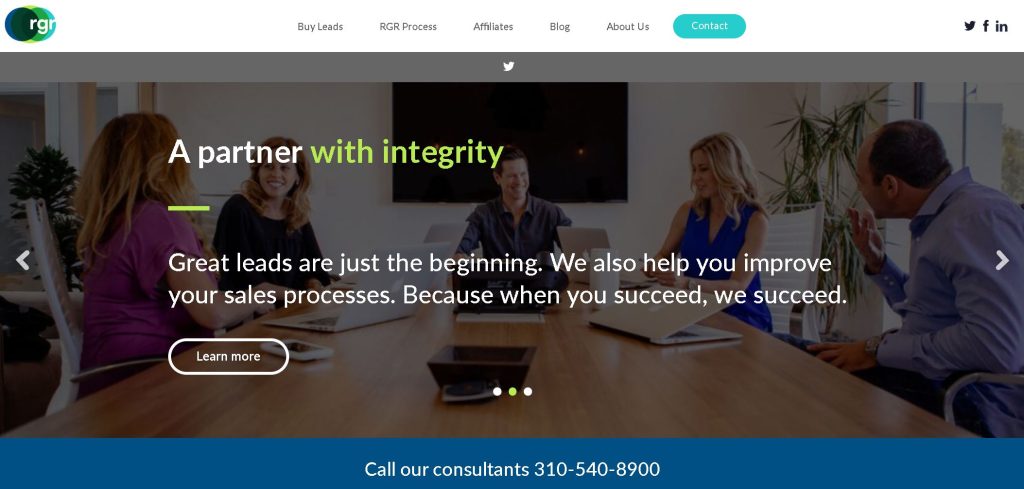
RGR Marketing is an established provider of solar leads with over 20 years of experience, helping solar business connect with homeowners looking for solar solutions. Founded in 2004, they have extensive experience providing high quality solar leads for mortgage, solar, and home improvement sectors in the US.
Types of Solar Leads:
RGR Marketing offers exclusive, high quality solar leads. These leads include full information on the homeowner, contact details, homeowner status and utility provider information which is verified for accuracy.
Source of Leads:
RGR utilizes solar lead generation through targeted digital marketing to homeowners looking for solar energy solutions. They focus on quality and relevance for highest conversion.
Craftjack
A lead generation service under EverCommerce portfolio connecting contractors with homeowners for various trades including solar. Operates pay-per-lead model where contractors set monthly budget with prices varying by service. Offers 20% speed-to-call discount for contractors calling leads quickly via app. Lead credit policy for invalid leads with 72-hour request window. Craftjack Pro mobile app manages leads, tracks estimates, requests reviews, handles account/billing. Generates leads through SEM, SEO, content marketing strategies.
Modernize
A home improvement lead generation service providing leads for 20+ trades including solar across the US. Uses dynamic “Right Pricing” methodology where cost per lead varies based on trade, homeowner intent, lead volume, market location supply/demand. Contractors must contact directly for area-specific quotes. Secondary sources suggest shared solar leads cost $100+ with appointments ranging $120-$250. Offers standard leads (homeowner details), inbound calls (direct homeowner calls), live transfers (qualified calls transferred from call center), and Modernize Appointments (scheduled in-home appointments). Qualification process includes data verification for valid contact information and addresses, plus call center verification of interest and project needs. Uses Data Feedback Loop system tracking lead outcomes to optimize marketing budget toward higher-quality channels. 18+ years in lead generation industry.
Service Direct
A pay-per-call lead generation company providing exclusive, real-time phone leads across the US with no setup fees or long-term contracts. Operates competitive marketplace where contractors set own cost-per-lead with higher bids winning more volume. Only pay for “valid, qualified calls” determined through automated IVR prompts (85% of calls) or call center representatives (15%) filtering for service need and decision-maker authority before connecting to contractor. Service areas defined by contractor with ability to add/remove zip codes anytime. Claims average 8.5x ROI and delivers average 37 leads per month. Generates leads through search engine marketing, directory sites, social media, and third-party publishing partners.
Qualified Solar Leads
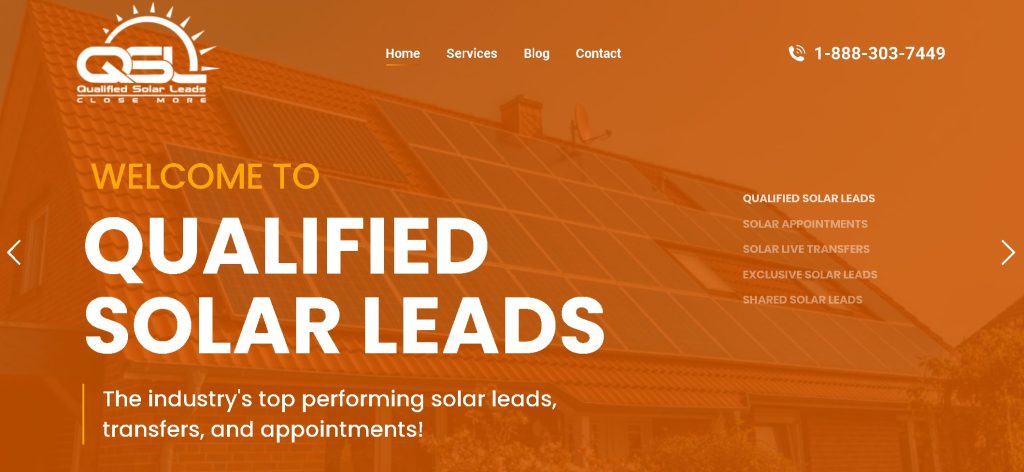
Qualified Solar Leads provides high quality solar appointments, aged solar leads and live transfers. They serve solar companies looking to scale their operations and increase sales efficiency, with almost a decade of industry experience. The company markets “One-to-One Solar Leads” designed to comply with higher consent standards, ensuring consumers explicitly choose which companies they want to hear from via designated checkboxes. While the FCC’s “one-to-one consent” rule was struck down by court in January 2025, QSL continues to use this higher standard of consent as a key marketing feature and trust signal.
Types of Solar Leads:
- Exclusive Solar Leads: Not shared with other installers, one buyer per lead.
- Shared Solar Leads: Shared among a few installers, balance of exclusivity and cost.
- Aged Solar Leads: Older leads at a discounted rate, for call center operations.
- Solar Live Transfers: Real time leads transferred to your sales team after initial qualification.
- Opt-In Solar Leads: Leads from people interested in learning more about solar.
Source of Leads:
Qualified Solar Leads generates leads through in-house and top-tier publishers. They have a multi-step business process of initial inquiries through various advertising methods followed by a detailed qualification process to ensure lead quality.
Top Commercial (B2B) Solar Lead Providers
Martal Group
A B2B sales and lead generation agency providing “Sales-as-a-Service” for commercial solar sector, acting as outsourced sales development team. Handles prospecting, outreach, lead qualification, and appointment setting using North American-based sales representatives. Targets solar installers, inverter/panel manufacturers, renewable energy developers, energy service providers, and green building contractors. Uses multi-channel outbound strategy with proprietary AI system, email, LinkedIn, cold calling across 15+ touchpoints. Employs AI and intent data to identify companies actively seeking solutions. Qualification process identifies decision-makers, understands pain points, confirms alignment with client’s Ideal Customer Profile before booking sales meetings. First qualified leads delivered within 2-3 weeks after 30-day onboarding. Offers three service tiers: Tier 1 lead generation, Tier 2 adds customer onboarding assistance, Tier 3 includes full account management.
Top Aged Lead Providers
Aged Lead Store
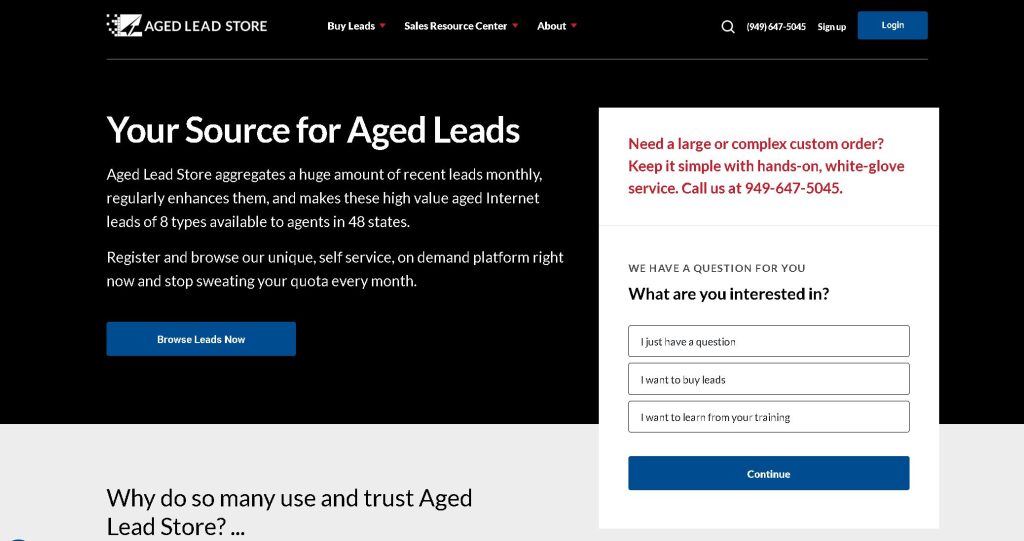
Aged Lead Store provides aged leads for various industries including solar installation. A cost effective alternative to fresh leads by selling information on customers who have shown interest but haven’t bought yet. They offer a self-service platform to access millions of leads with filtering options for geography, age, and industry-specific criteria. Important note: TCPA compliance is crucial when contacting aged leads, especially with automated dialing systems. While the strict “one-to-one consent” rule was struck down in January 2025, businesses must still ensure they have valid prior express written consent for any automated contact and adhere to DNC regulations.
Types of Solar Leads:
Aged Lead Store offers aged solar leads, categorized by how long ago the lead was generated and their interest in installing solar panels. They offer three main types:
- Solar installation leads: aged 30 to 85 days.
- Solar installation leads: aged 86 to 365 days.
- Solar installation leads: aged 366 to 2000 days (only with landline contact information).
Source of Leads:
Leads are generated from initial marketing efforts like online ads, TV commercials and other campaigns that didn’t result in immediate sales. Then aged and sold at a discount.
Why Should I Purchase Solar Leads?
Buying solar leads gets you into the solar market faster and helps you execute your sales strategy sooner. You get a pool of pre-qualified people interested in solar solutions, so you don’t have to spend time and money on customer research and lead generation.
Choosing the right solar lead generation company is key to the leads being good and trustworthy.
- 🚀 Efficiency: Ready lists of prospects make the sales process faster.
- 📈 Higher Conversion Rates: Pre-qualified leads mean more sales.
- 💰 Cost-effective: Cheaper and better ROI than generating leads in-house.
- 🌍 Market Expansion: Get into new areas or markets faster.
- 📊 Sales Predictability: Leads flow in, so you can forecast and plan.
Buying leads can significantly benefit a solar business by improving solar sales and fostering valuable partnerships.
What Are the Red Flags to Watch For When Buying Solar Leads?
When buying solar leads, you should watch for several warning signs that indicate poor quality providers or potential scams. Here’s a checklist of critical red flags to avoid:
- Unrealistic Promises and Prices: Be wary of exceptionally high closing rates or “too good to be true” pricing, as reputable providers acknowledge purchased leads typically convert at 5-8%. Any provider claiming 50%+ conversion rates is likely misleading you.
- Lack of Transparency: Providers should clearly explain their lead generation methods, pricing structure, and data included. They should have a professional website and verifiable physical address, not just a PO Box.
- No Clear Lead Return or Credit Policy: Reputable providers offer credits for invalid leads like disconnected numbers or duplicates. Avoid providers who won’t guarantee their data quality.
- High-Pressure Sales Tactics: “Limited-time offers” that prevent due diligence are a major red flag. Legitimate providers understand you need time to evaluate their service.
- Vague or Non-Compliant TCPA Consent: Following stricter consent requirements, providers must obtain clear consumer consent for each specific company. While the “one-to-one” rule was vacated by court in January 2025, strict consent remains paramount.
- Fake, Suspicious, or Non-Existent Reviews: Look for realistic mix on trusted platforms, avoid exclusively 5-star generic praise. About 30% of leads sold by third-party vendors are estimated to be fraudulent.
Always request a small test batch before committing to large volumes, and verify the provider’s track record with other solar companies in your market.
What Legal Considerations Should I Be Aware Of When Buying Solar Leads?
When buying solar leads, you should be aware of key legal considerations to ensure compliance and ethical practices.
Telephone Consumer Protection Act (TCPA) Compliance
The FCC’s “one-to-one consent” rule, originally scheduled to become effective January 27, 2025, was struck down by the U.S. Court of Appeals for the Eleventh Circuit on January 24, 2025. The court ruled that the FCC exceeded its statutory authority in requiring separate consent for each specific marketing partner. Despite this legal development, the underlying requirement for clear consumer consent remains paramount, and lead generators must still obtain proper “prior express written consent” for automated calls and texts under existing TCPA requirements. Businesses should maintain transparent consent practices and ensure compliance with Do Not Call regulations.
Disclosure of Marketing Partners
Lead generation companies need to transparently list all marketing partners when getting consent from leads. This way consumers are fully aware of who will be contacting them and for what.
Quality of Leads
Buying high quality leads that are relevant to your target audience is key. Low quality leads or leads generated through shady means can waste resources and harm your business.
Lead Sharing
Know if the leads you buy are exclusive or shared with other companies. Exclusive leads are more expensive but have higher conversion potential since no other competitor has access to them.
Legal Risks with Offshore Call Centers
Using offshore call centers for lead generation can be cheap but comes with higher risk of TCPA violations if the call centers don’t comply with US laws.
Work with lead generation companies and follow the rules when buying and using solar leads. That way you’ll be safe from legal headaches and boost lead conversion and customer trust.
How to Effectively Nurture Purchased Solar Leads for Higher Conversion?
Converting purchased solar leads requires a systematic approach to nurturing that maximizes your investment. Here are proven strategies to boost your conversion rates:
1. Speed-to-Lead is Critical
Conversion probability decreases significantly after five minutes. Responding within the first minute increases conversions by 391%. Conversion rates are 8x greater in the first five minutes. Execute immediate call followed by automated text and email if no answer. With immediate and regular follow up in the first few hours, installers can achieve 75-80% contact rate.
2. Multi-Touch Follow-Up Cadence
Single contact channel is insufficient. Use a mix of phone calls, emails, SMS, and social media. 80% of successful sales require five or more follow-ups. Sample cadence: Day 1 immediate call/email/SMS, Days 2-5 mix of calls and emails, Days 7-14 continue with valuable content like case studies, ongoing monthly/quarterly check-ins.
3. Personalization is Key
Generic outreach is ineffective. Use prospect’s name, reference specific inquiry details, send personalized videos, and tailor solutions to stated needs. This builds trust and demonstrates genuine interest in solving their specific problems.
4. Provide Educational Content
Build trust by providing value through eBooks, checklists, case studies, savings calculators, and blog posts about solar technology and financing. This positions you as a trusted advisor rather than just another salesperson.
5. Use Solar CRM Systems
A solar CRM is essential for automating follow-up emails, tracking interactions across channels, lead scoring to prioritize high-intent prospects, and ensuring no lead is forgotten. This systematic approach prevents leads from falling through the cracks.
How Can I Generate My Own Solar Leads?
To generate leads for your own solar business, find your target audience, tailor your message, use local directories and social media, SMS and email marketing, and community events. Here’s how:
- Find your target audience: Are your ideal customers homeowners or businesses? What are their demographics, age, and energy spending habits? This will help you tailor your outreach.
- Tailor your message: Differentiate your message for residential vs commercial prospects. What benefits will resonate with each group? Cost savings for homeowners and environmental benefits for businesses.
- Optimize Your Google Business Profile: Fully optimize your Google Business Profile by selecting specific categories like ‘Solar Energy Contractor,’ ensuring your business name, address, and phone number (NAP) are consistent everywhere online, and writing a compelling business description with local keywords. Regularly upload high-quality photos and videos of installations and your team. Actively encourage and promptly respond to all customer reviews to build trust and improve local search rankings.
- Offer Free Solar Audits or Consultations: Attract high intent homeowners by offering a free, no-obligation solar audit or consultation. This can be promoted on your website and social media. An effective lead magnet is an online calculator that allows potential customers to estimate their savings and return on investment, capturing their contact information in the process. This positions you as a helpful expert and gives you a direct opportunity to engage with homeowners who are actively considering a solar investment.
- Use local service directories: Get listed on Yelp and EnergySage so customers who are searching for solar solutions can find you. This increases your visibility to the right audience.
- Engage in Online Communities: Participate in local online communities where homeowners are active, such as local Facebook groups, Nextdoor, or forums related to home improvement and sustainable living. Offer genuine advice and answer questions about solar energy without a hard sell. This helps build your brand’s visibility and establishes you as a trusted local expert, leading to organic inquiries and leads.
- Use social media: Engage with leads by sharing different content on Facebook and Instagram. Use hashtags to be more discoverable and reach your target audience better.
- Run SMS and email marketing campaigns: Build a subscriber list and keep potential customers informed with updates, offers, and useful info. Personalized messages will boost engagement rates.
- Form Partnerships with Related Trades: Establish referral partnerships with local businesses that serve homeowners and are not direct competitors. This includes roofers, real estate agents, home builders, and home improvement contractors. These partners can refer clients who are building, buying, or renovating a home and may be prime candidates for solar installation, creating a steady stream of qualified leads.
- Attend community events and trade shows: These are great opportunities to meet potential customers in person. Use promo materials and run contests to get attention and capture contact details.
By following these steps, you can effectively generate solar leads and grow your business in the competitive solar market.
What Does a Solar Lead Look Like?
A solar lead looks like a detailed profile consisting of contact information and individual interest in solar energy solutions. Here’s a sample:
- Name:
- John Doe
- Contact Info:
- Phone: +1 234 567 8900
- Email: [email protected]
- Address:
- 123 Sunshine Blvd, Solar City, CA 90210, USA
- Interested in:
- Full rooftop solar installation.
- Wants info on government rebates and tax credits for solar.
- Demographics:
- 45 years old
- $100,000 income
- Single family home owner, 2,000 sq ft.
- Source:
- Contact form on Google Ads landing page.
- Engagement:
- Downloaded “Understanding Solar Energy Savings” guide.
- Attended free webinar on home solar last month.
- Best Time to Contact:
- Weeknights 6:00-8:00 PM.
- Conversion Potential:
- High. Looking for quotes and has the budget to move forward.
FAQ: Buying Solar Leads
Conversion rates depend heavily on lead type. For exclusive leads, appointment-setting rates can range from 40% to 70%, with a final sale conversion rate between 8% and 20% of total leads. For shared leads, competition is high, leading to lower conversion rates, often cited around 10% for appointments and potentially 1-5% for sales. These numbers are benchmarks and actual results depend heavily on lead quality and the sales team’s sales process.
Yes, you can get solar leads without buying them. Optimize your website for SEO, do social media marketing and offer incentives for referrals to get directly in front of people interested in solar solutions.
Yes, you can target commercial properties for solar leads. Commercial clients are more focused on cost and deal with bigger budgets and on a bigger scale. This results in a more complex sales process. To tap into this market online advertising, SEO and leveraging success stories are key.
Yes, there are tools to purchase solar leads, including lead generation platforms and software designed specifically for acquiring solar power leads.
No, solar power leads do not guarantee sales due to various uncertainties and factors that influence the buying process. For example, buying solar panels is a long decision making process where buyers research extensively. Additionally, factors such as the age and lead quality, and whether they are pre-qualified, significantly impact conversion rates.

